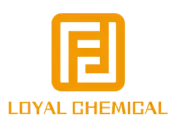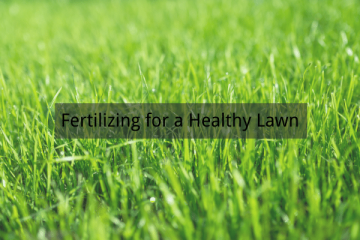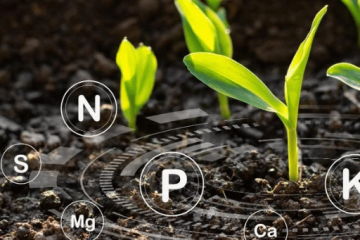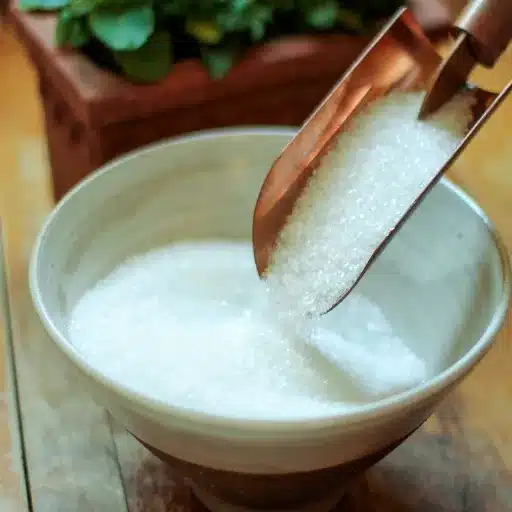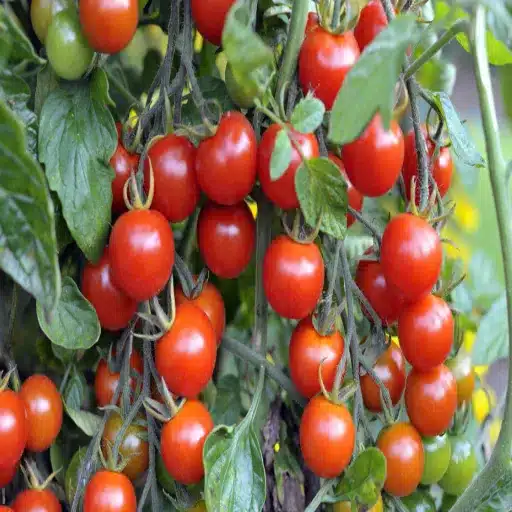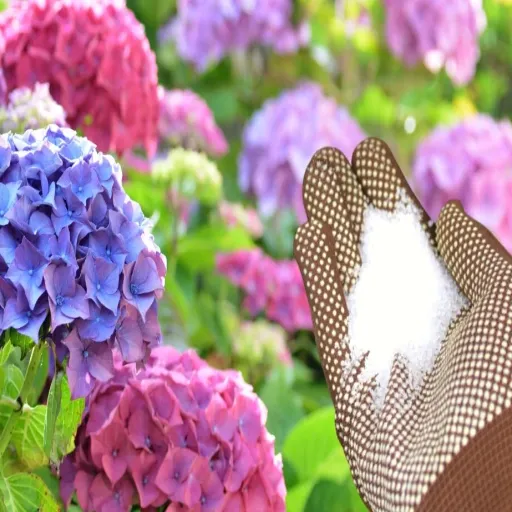Gardening enthusiasts and plant lovers are constantly on the lookout for cost-effective and natural ways to boost plant growth and health. One such solution that’s been gaining popularity is Epsom salt. Known for its high magnesium and sulfur content, Epsom salt has proven to be an extraordinary supplement for a variety of plants, from vegetables to roses. But how exactly does it work, and what makes it so beneficial? This guide will explore the science-backed benefits of Epsom salt for plants, providing you with detailed application tips to maximize its potential in your garden. Whether you’re a seasoned gardener or just starting, this article will equip you with the knowledge to effectively incorporate Epsom salt into your plant care routine.
How to Use Epsom Salt in the Garden Effectively
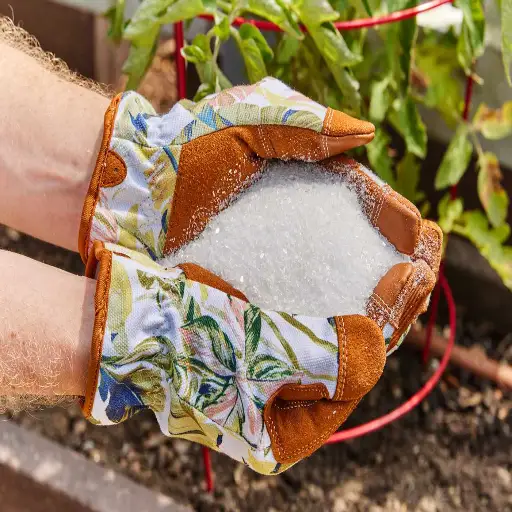
Proper Dilution Rates: Tablespoons of Epsom Salt Per Gallon of Water
The appropriate dilution rates of Epsom salt are very important for ensuring plants receive the optimal value of magnesium and sulfur without risking over-application. For general use, dissolve 1 to 2 tablespoons of Epsom salt in a gallon of water. Such concentration is appropriate for most plants and provides an adequate level of nutrients either to the soil or foliage. For more specific applications:
- Flowering Shrubs: Promote brighter blooms with 1 tablespoon per gallon as a soil drench every month during the growing season.
- Vegetable Gardens: For crop yield and enhanced leaf development, apply a solution of 1 tablespoon per gallon of water as a foliar spray every two weeks.
- Lawns: applied to larger areas such as lawns, dilute 1 pound of Epsom salts in 5 gallons of water per 1,250 square foot of lawn. Use a sprayer for even distribution.
Ongoing assessment is advisable after applying initial treatments while adjusting their frequency as required for optimal outcomes. Exceeding the set dosage tends to disturb the balance and can have soil imbalance effects, underlining the importance of these guidelines.
Application Methods: Foliar Spray vs. Soil Treatment
The use of Epsom salt can be optimized through two major strategies—spraying on the leaves and adding it to the soil. Spraying on the leaves ensures rapid absorption of the Epsom salt solution as the plant’s physiological processes will permit opening of the leaves’ stomata during spraying while adding Epsom salt to soil is ideal for long-term use.
- Foliar Spray: This method involves applying a diluted Epsom salt solution directly onto the leaf surfaces of the plant. Plants can correct magnesium and sulfur deficiencies quite rapidly because they can absorb nutrients through the stomata located on their leaves. To prepare it, dissolve 1 tablespoon of Epsom salt in a gallon of water. To avoid unnecessary losses through evaporation, spraying should be done in the early morning or late evening. This form of application is effective for most of the flowering plants, vegetables, and fruiting trees with yellowing foliage and signs of magnesium deficiency.
- Soil Treatment: Adding Epsom salt directly to the soil encourages nutrient access. Incorporating this method with other approaches, along with aiming to solve a specific problem, serves as an ideal method for diagnosing systems. By mixing Epsom salt into the soil before planting or incorporating it into the watering routine, plants can absorb the minerals. Periodic testing of the soil is important to prevent overdoing the magnesium since it tends to displace calcium and potassium within the root zone, leading to problematic conditions.
All methods can be integrated for a combined synergistic effect, which not only solves nutrient deficiency problems but also builds soil health. As with any combination of soil and foliar applications, careful attention to plant response is essential to avoid overexploitation, which can change soil structure or create compositional or nutritional imbalances.
When and How Often to Apply Epsom Salt
Though Epsom salt (magnesium sulfate) can be used therapeutically, its application is based on the observed deficiency symptoms for a specific plant. In general, it is suggested that Epsom salt be applied during the active growing period, which is spring and early summer, because plants tend to increase their nutrient uptake further during that time. Most vegetables, fruits, and flowering plants are alright with once monthly application but certain crops like tomatoes and peppers could need more frequent applications if magnesium deficiency is diagnosed.
Epsom salt can be added to the soil or applied as foliar sprays; both methods have specific timings for application. For soil application, one tablespoon of Epsom salt in a gallon of water and pouring the solution is poured at the base of the plants to provide adequate magnesium at the right place. For foliar sprays, one teaspoon of the Epsom salt solution per gallon of water is suggested, though it is best done late afternoon or early morning to get maximum absorption while minimizing evaporation. Regular intervals of application should be coupled with monitoring plant performance to prevent overuse since excessive magnesium use can restrict calcium, which is an essential nutrient for plants.
When preparing to plan an application schedule, they should be guided by the requirements of a specific species along with the composition of soil in regards to the frequency and dosage needed.M ore recent studies underline the importance of incorporating regular soil testing into the optimization process of magnesium supplementation, ensuring that soil balance is sustained and preventing unforeseen nutrient shifts over time.
Which Plants Benefit Most from Epsom Salt?
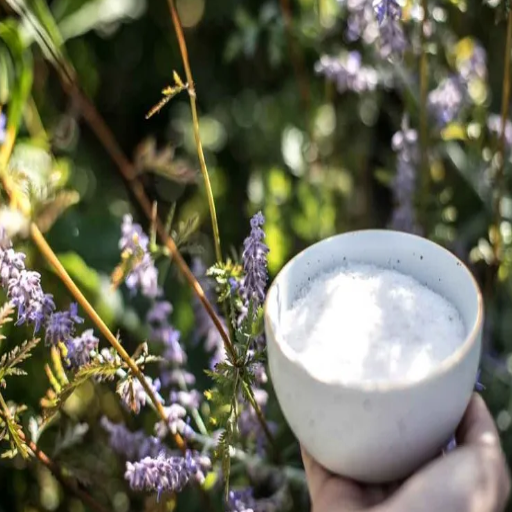
Tomato Plants and Preventing Blossom End Rot
A common physiological disorder associated with tomatoes is blossom end rot, which stems from a lack of calcium in the fruit. More recent studies, however, emphasize the importance of magnesium, specifically in the form of Epsom salt (magnesium sulfate), in providing secondary support in solving this problem. Magnesium enhances nutrient delivery by the vascular system because a prospective aid in chlorophyll and photosynthesis production, ensuring the plant receives proper nutrients. Appropriate levels of magnesium bolster a plant’s ability to absorb and transport calcium from the soil, thus assisting in skeletal system resources.
Soil analysis is critical for creating a strategy to aid blossom-end rot by first ensuring the soil contains appropriate levels of calcium and magnesium. Where soil supplementation is indicated, magnesium can be supplied through foliar sprays or Epsom salt soil amendments. A regular spray application involves dissolving one tablespoon of Epsom salt per gallon of water for foliar feeding on the leaves for 2-3 weeks, repeating the process hourly. This method allows for swift redress and amelioration of nutrient deprivation.
However, adhering to an optimal level is very important, as overuse of Epsom salt may lead to an aggravated case due to magnesium interfering with calcium uptake. Mobility of calcium in the plant system is also enhanced with the blending of Epsom salt use with the undertakings of providing uniform watering so that there are no changes in moisture levels of the soil. A combination of these practices will help gardeners deal with blossom end rot and subsequently yield more tomatoes.
Pepper Plants and Other Nightshades
Capsicum plants, as well as eggplant and some types of potatoes, share similar dietary and ecological requirements with tomatoes. Just like tomatoes, these plants can suffer from calcium deficiencies resulting in blossom end rot. For example, calcium-deficient pepper plants can show tissue necrosis at the blossom end of their fruits. To avoid this, plants need proper watering and a well-balanced soil composition that is rich in calcium.
Pepper nightshades can benefit from soil analysis and pH level checks as a proactive means of addressing nutrient deficiencies. With adequate analysis, growers can calculate the content of nutrients available in soil, which is fundamental because calcium acceptance largely depends on the acidity or alkalinity of the soil. For instance, nightshades do well in slightly acidic soils with pH values between 6.2 and 6.8, where calcium is optimally available. In addition, other studies indicate that changes in soil water content amplify stress to the roots, which makes nutrient uptake more difficult. These issues can be minimized by using mulch or drip irrigation, which can stabilize soil moisture and reduce deficiency risks.
Moreover, certain fruit developing stages can be treated efficiently using calcium chloride or calcium nitrate foliar sprays, which are believed to be aimed and effective. These fulfill the function of these spray,s providing calcium straight to the plant parts for immediate absorption while minimizing the chances of physiological stress. While employing these therapies, growers need to be cautious of the concentration levels to avoid possible secondary adverse impacts of leaf burning or other damage. With careful management of the soil and strategic addition of calcium, the healthy development of a range of nightshades can consistently be obtained.
Plants That Don’t Like Epsom Salt
Although Epsom salt is widely advertised as a supplementary aid for various plants due to its purported benefits, there are notable exceptions where it can prove harmful. Plants such as sage, rosemary, and other Mediterranean herbs that naturally prefer lower magnesium or sulfur soils can be adversely affected by the supplements loose form due to its high magnesium concentration. Grown in low-nutrient, well-drained soils, an oversupply of magnesium can cause an imbalance of calcium—and therefore inhibit its uptake—leading to stunted growth alongside other developmental hinderances.
Acid-loving species such as blueberries and azaleas have specific requirements when it comes to the balance of soil pH and nutrients that are essential to their specialized biology. In high concentrations, magnesium can disrupt the delicate nutrient balance that acidic soils maintain and result in nutrient lockout and toxicity. As these plants experience the highest osmotic stress whereby water intake is hindered, the notion of ‘falsely calibrated use’ of Epsom salt is proven detrimental to soil salinity levels.
Soil testing should be done before applying Epsom salt in order to gauge its appropriateness for particular plant types, preemptively reducing negative consequences while fostering judicious nutrient facilitation.
Diagnosing Magnesium Deficiency in Your Plants
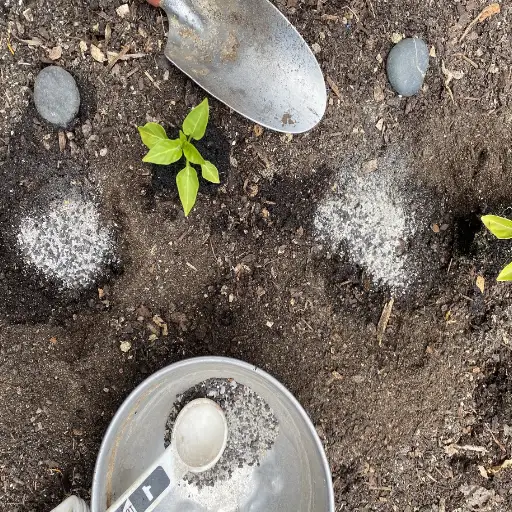
Visual Signs Your Plants Need Magnesium
One of the most significant indicators of a lack of magnesium in plants is the interveinal chlorosis symptom, where the chloroplasts embedded in the veins of the leaves are still green while the area in between them is yellow. This symptom typically appears on older leaves since magnesium is considered a mobile nutrient that the plant reallocates to better parts of the plant when it is deficient. Gradually, the deficiency may lead to progressive yellowing of the leaves; at the same time, there may be necrotic or scorched spots on the edges. These changes reduce the plants’ photosynthetic efficacy, potentially stunting growth and leading to reduced overall vigor.
Other significant indicators of magnesium deficiency are physical changes like curling, distortion of the leaves and making them brittle. These changes occur because of the weakening of the processes at the cellular level because magnesium aids in the stabilization of the ribosome, cell wall, cell membrane, and cell structures. Magnesium deficiency in the reproductive parts of the plants can lead to a significant reduction in the volume of the fruits, but more importantly, the fruits themselves will be below optimum standards—having lesser sugar content, being smaller in size, and being unripe previously slated for harvest—shrinking crop yield and profits. The detection of magnesium deficiency can be aided by observing such structural or biological deficiencies.
Moreover, impacted vegetation may display slower growth alongside higher sensitivity to environmental stress. A magnesium deficit inhibits the synthesis of chlorophyll, which disrupts the energy-generating cycle within the plant. As a result, the plant will be incapable of enduring temperature changes or pest infestations. Conducting detailed analyses of soil and plant tissues can accurately pinpoint magnesium scarcity, shedding light on different levels of deficiency. These diagnostic methods enable specific corrective actions to be implemented, guaranteeing proper optimal nutrient addition rather than remediation that risks compounding the problem if done improperly.
The Importance of Soil Testing Before Adding Epsom Salt
Conducting a detailed soil examination before applying Epsom salt (magnesium sulfate) to the soil system is a critical step to both maximize the usability of the fertilizer and safeguard the soil ecosystem’s health. Excess magnesium application can lead to significant conflicts with other nutrients controlled by calcium and potassium, which are vital for proper plant growth. Soil testing captures baseline values of magnesium, along with pH and ratios of major macronutrients, to ascertain a comprehensive nutrient profile and enable sound decision-making.
Moreover, combining this understanding with observable evidence enables drawing logical inferences on soil-deficient nutrients in conjunction with specific plant species’ needs. Spaced and systematic soil sampling results from studies shows many soils, particularly those with high organic matter or located with natural magnesium deposits, meeting plant requirements without need for supplements. Ignoring soil analysis and applying haphazardly exposes the risk of achieving conditions such as magnesium toxicity or even salt-induced toxicity in soil over time. The lack of microbial activity needed for nutrient cycling would be disrupted.
With this information, soil testing enables growers to avoid common errors, tailoring interventions with precision instead of guesswork which ensures no lasting damage goes from untested amendments.Such an approach enhances plant productivity and health while simultaneously assisting in the strategy of sustaining soil health over longer periods.
Common Mistakes When Using Epsom Salt for Plants

Overuse Concerns: How Much Epsom Salt is Too Much
Although Epsom salt (magnesium sulfate) is widely marketed as a low-cost and easily applicable supplement for plant growth with no need for special skills, its overuse can be quite harmful to soil and plant health. Research and agronomic analyses highlight the concern of disproportionate magnesium sulfate application causing a deficiency of balance among nutrients, primarily disturbing the calcium to magnesium ratio. Such an imbalance may restrict the ability of the plant to effectively absorb and utilize other important nutrients such as potassium, calcium, and phosphorus.
Most experts agree that applications should be kept within recommended limits, which differ depending on the crop and type of soil. For instance, crops that are non-deficient in magnesium might not respond positively to its application, and using unnecessary sulfate could worsen the salinity of the soil, diminishing water permeability and leading to compaction. Based on soil science studies, recommended dosages vary from one to two tablespoons mixed in one gallon of water for foliar sprays or soil additives and should only be applied post reliable soil testing with confirmed magnesium deficiency.
It is critical to point out that indiscriminate and moronic use of Epsom salt damages soil cultivation by destroying soil structure, enhancing nutrient leaching, and, in extreme cases, leading to toxic concentrations that show as leaf necrosis or growth inhibition. Epsom salt application in agriculture should be part of a comprehensive program ‘Integrated Nutrient Management’ which incorporates numerous practices to increase soil fertility while observing soil balance and preventing soil degradation.
How Epsom Salt Affects Soil pH
Epsom salt or magnesium sulfate (MgSO₄) has a pH that is considered neutral while having almost no direct bearing on soil acidity or alkalinity. Having no bearing on pH also means that the salt neither increases nor decreases the quantity of H+ ions or OH⁻ ions, which are crucial for determining the pH level in the soil. But, as asoil chemistry changes, these indirect impacts may be crucial.
As an example, the application of Epsom salt can improve magnesium deficiency stimulated by other nutrient imbalance catalysts which tend to destabilize pH balance. Furthermore, its solubility guarantees high availability of magnesium and sulfate ions to plants or leach through the soil, which can over time change pH in certain soils, like sandy soils which are easily leached, leading to more drastic changes from more prolonged application.
While Epsom salt does not act as a liming agent to increase pH or an acidifier to decrease it, it can raise some soils over time, depending on the soil amendments and nutrients used in combination with Epsom salts. Proper soil testing before and following application is critical for determining variations and changes in soil health to enhance productivity over extended periods.
When Epsom Salt Cannot Help Your Garden Problems
Epsom salt’s potential benefits are oligistic. It could be useful in some gardening cases, but it does not help in solving some other garden problems. Likewise, enabling spells such as magnesium and sulfur nutrient deficiencies of nitrogen, phosphorus, or potassium cannot be cured through the application of Epsom salt. Plants that show GUI symptoms like leaves turning yellow, not growing, and not blooming could be facing a lack of fundamental macronutrients, which can’t be offered through Epsom salt.
Soil conditions like very high or low ranges of pH or compaction are more structural problems that cannot be solved using magnesium sulfate. For instance, areas with high concentrations of clay coupled with poor drainage tend to cutoff plant root systems. This inhibition stunts growth and does not allow the plant to make use of magnesium or sulfur levels. These types of problems are better dealt with using organic matter or lime as soil amendments.
Most importantly, over usage of Epsom salt can lead to some sorts of toxic imbalance, imbalance in soil and damage to some plants. The presence of additional magnesium makes the soil interfere with the uptake of other important nutrients such as calcium and potassium. This leads to an unbehind influx of declining healthy leaves while further weakening the health of the plant. Understanding your garden is key to management, it is the primary step in curtailing uncontrolled deficit in sustaining plant life and supporting eco-friendly habitat.
Epsom Salt vs. Traditional Fertilizers
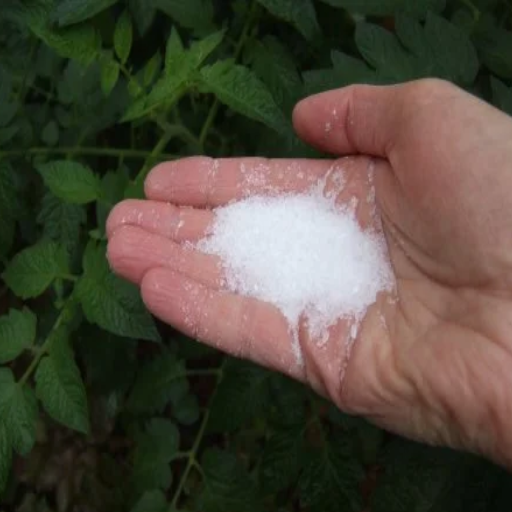
Comparing Nutrient Content and Benefits
Epsom salt, or Magnesium sulfate, in a technical sense, offers two primary nutrients for plants—magnesium and sulfur. Both these nutrients serve specific purposes in plant metabolism; magnesium is an essential part of chlorophyll, which is needed during photosynthesis, whereas sulfur is vital for the formation of amino acids and vitamins. Still, it does not contain the rich, balanced nutrient profile typical of other fertilizers.
In contrast, other fertilizers offer a comprehensive blend of nutrients which is formed using nitrogen (N), phosphorus (P), and potassium (K), hence the term NPK fertilizers. Plant growth, root development, and flowering or fruiting are supported by these three macronutrients to a great degree. Other traditional fertilizers may blend some micronutrients like zinc or iron and copper, offering a more balanced nutrition profile.
When assessing the benefits of targeted solutions, Epsom salt is effective for addressing magnesium or sulfur deficiencies specifically and cheaply, making Epsom salts a suitable targeted approach. These salts use fewer resources than general solutions. Traditional fertilizers, on the other hand, use more resources to cover a larger range of plant requirements. However, without careful application, these traditional solutions run the risk of nutrient runoff and over-fertilization. Epsom salt and other traditional fertilizers are best to be chosen with the help of soil tests in conjunction with plant needs.
When to Use Epsom Salt as a Supplement, Not a Replacement
Magnesium sulfate, commonly referred to as epsom salt, should serve as a targeted supplement instead of a primary nutrient source. Its use is most effective where plants show sulfur or magnesium deficiency, which may appear in yellowing leaves (interveinal chlorosis) or stunted growth. However, it must be verified through a soil test first. Sulfur and magnesium, although being vital for a plant’s growth, are lesser in necessary compared to macronutrients such as nitrogen, phosphorus, and potassium.
Epsom salt improves the physique of water by providing magnesium sulphate, a nutrient that is necessary in a quick-release form. However, it does not supply a balanced array of dietary elements that are required to achieve long-term nutrition for plant species. An imbalance in soil chemistry impacts plant growth negatively, which is caused due to over-dependency of Epsom salt in plants as Epsom salt serves as a substitute fertilizer. Current studies state that Epsom salt can be used in place with soil rich fertilizers in strategic areas such as having a well-built nutritional framework targeting the crop as well as taking account the nutrient levels that the soil has to offer.
It is most useful if applied as a foliar spray or incorporated into the soil in small amounts. Occasionally, crops like roses, peppers, and tomatoes benefit greatly from these treatments. However, minimal level overexposure to magnesium use must be adhered to. These guidelines are set to help stem risks such as the accumulation of Magnesium that competes against the vital nutrients of calcium and potassium.
References
Frequently Asked Questions (FAQs)
Q: Is Epsom salt good for plants, and how can it benefit my garden?
A: Yes, Epsom salt, also known as magnesium sulfate, can be good for plants when used appropriately. It provides two essential nutrients that plants need: magnesium and sulfur. Magnesium is crucial for chlorophyll production and helps plants process sunlight into energy, while sulfur assists with protein production. When gardening with Epsom salt, you may notice greener foliage, more robust growth, and enhanced flowering and fruiting. However, it’s important to note that not all plants benefit from Epsom salt – it should only be used when your garden soil is deficient in magnesium. Overuse can disrupt the nutrient balance and potentially harm your plants’ roots, so soil testing before application is recommended for optimal organic gardening practices.
Q: How can Epsom salt help with blossom end rot in tomatoes?
A: Epsom salt can help indirectly with blossom end rot in tomatoes, but it’s important to understand the relationship correctly. Blossom end rot is primarily caused by calcium deficiency or inconsistent watering that affects calcium uptake. Epsom salt itself doesn’t contain calcium, but the magnesium it provides can improve the plant’s ability to absorb calcium in the soil. However, adding Epsom salt won’t solve the problem if there’s no calcium present to begin with. For best results, combine a moderate application of Epsom salt with calcium-rich amendments and consistent watering. Remember that too much magnesium can compete with calcium absorption, so use moderate amounts of Epsom salt (about 1-2 tablespoons per planting hole or as a foliar spray at 1 tablespoon per gallon of water) to help your tomato plants utilize available calcium more efficiently.
Q: Are peppers and tomatoes particularly responsive to Epsom salt treatments?
A: Yes, peppers and tomatoes are among the garden plants that tend to respond well to Epsom salt applications. These nightshade family members are often heavy feeders that require substantial magnesium for proper development. When these plants show yellowing leaves while veins remain green (chlorosis), it often indicates magnesium deficiency, and Epsom salt can help correct this issue. For peppers and tomatoes, you can apply Epsom salt at planting time (1 tablespoon in the planting hole), as a side dressing during the growing season (1 tablespoon per foot of plant height), or as a foliar spray (1 tablespoon per gallon of water) every 4-6 weeks. This supplementation often results in stronger plants, improved fruit production, and better overall plant health. However, don’t use Epsom salt as a complete plant fertilizer, as it provides only magnesium and sulfur, not the full spectrum of nutrients these plants need.
Q: Which plants don’t like Epsom salt and may be harmed by its application?
A: Not all plants benefit from Epsom salt, and some plants don’t respond well to additional magnesium. Sage, rosemary, and other Mediterranean herbs that prefer leaner soil conditions may suffer from excessive Epsom salt applications. Plants growing in soil already rich in magnesium can experience nutrient imbalances when Epsom salt is added. Bean and legume plants, which are efficient at utilizing existing soil nutrients, rarely need supplementation. Additionally, native plants adapted to your local soil conditions generally don’t require Epsom salt amendments. Before application, it’s best to conduct a soil test to determine if magnesium is deficient. Plants don’t benefit from random applications of Epsom salt when no deficiency exists, and excessive use can antagonize the uptake of calcium and potassium, potentially causing more harm than good to your garden plants.
Q: How should I apply Epsom salt to potted plants?
A: When applying Epsom salt to potted plants, moderation and proper technique are key. For regular maintenance, dissolve 1-2 teaspoons of Epsom salt in a gallon of water and use this solution once a month when watering your potted plants. For plants showing signs of magnesium deficiency (yellowing leaves with green veins), you can increase this to 1 tablespoon per gallon. Alternatively, you can sprinkle 1 teaspoon directly onto the soil surface of a medium-sized pot (6-8 inches) and gently work it into the top layer before watering thoroughly. For foliar application, dissolve 1 teaspoon in a quart spray bottle of water and mist the leaves, preferably in the morning so the leaves can dry before evening. Because container soil can concentrate minerals over time, it’s important to never apply Epsom salt at full strength to potted plants and periodically flush the pots with plain water to prevent salt buildup that could damage plants’ roots.
Q: Can Epsom salt help plants grow bushier and produce more flowers?
A: Yes, Epsom salt can help plants grow bushier and produce more abundant flowers when used appropriately. The magnesium in Epsom salt is a key component of chlorophyll production, which enhances photosynthesis and overall plant vigor. For bushier growth, you can apply a foliar spray of 1 tablespoon Epsom salt dissolved in 1 gallon of water every 4-6 weeks during the growing season. This application method allows for quick absorption through the leaves. Many flowering plants, especially roses, respond well to Epsom salt treatments, often producing more buds and vibrant blooms. Magnesium helps strengthen cell walls and improves the plant’s ability to create proteins, enzymes, and carbohydrates needed for robust growth. However, results vary depending on your existing soil conditions – plants only benefit from Epsom salt when magnesium is deficient, so consider a soil test before regular applications to ensure you’re addressing a real need.
Q: How does Epsom salt affect seed germination and seedling development?
A: Epsom salt can positively influence seed germination and seedling development when used in very diluted solutions. For seed soaking, a weak solution (1 teaspoon Epsom salt per gallon of water) may help soften seed coats and provide initial magnesium that can stimulate embryo development. For seedlings, magnesium promotes strong cell division and chlorophyll production, resulting in more vigorous early growth. To apply to seedlings, use an extremely diluted solution (½ teaspoon per gallon) once every two weeks after true leaves appear. The sulfur component in Epsom salt also supports enzyme development important for the seedling stage. However, it’s crucial to note that excessive amounts of Epsom salt can inhibit germination and burn delicate seedling roots. Never apply Epsom salt directly to seeds or very young seedlings, and always use it as a supplement to, not replacement for, proper seedling nutrition with balanced, diluted fertilizers designed for early plant growth.
Q: Can Epsom salt be harmful if used incorrectly in gardening?
A: Yes, Epsom salt can be harmful when used incorrectly in gardening. While it’s soluble and generally safe when applied appropriately, excessive use can create several problems. Too much Epsom salt can disrupt the nutrient balance in your garden soil by competing with other minerals like calcium and potassium for plant uptake. This competition can induce deficiencies of these other essential nutrients. High concentrations of Epsom salt can also increase soil salinity, which damages plants’ roots and can lead to moisture stress or even plant death. Additionally, using Epsom salt as a cure-all without identifying specific magnesium deficiencies wastes resources and can mask other underlying issues. The addition of Epsom salts should always follow soil testing that confirms a magnesium deficiency. Never apply Epsom salt at rates higher than recommended (generally 1 tablespoon per gallon for foliar sprays or 1 cup per 100 square feet for soil application), and avoid frequent applications without monitoring soil conditions.
Q: Is Epsom salt sufficient as a complete fertilizer for my garden?
A: No, Epsom salt is not sufficient as a complete fertilizer for your garden. While Epsom salt is a good source of magnesium and sulfur, it lacks the other essential macronutrients that plants need, including nitrogen, phosphorus, potassium, and calcium. Think of Epsom salt as a supplement rather than a complete plant fertilizer. It should be used alongside a balanced fertilization program to address specific magnesium deficiencies. Plants require at least 16 different nutrients for healthy growth, and Epsom salt only provides two of these. For comprehensive garden care, combine organic matter like compost, balanced organic fertilizers, and targeted amendments like Epsom salt when needed. This approach supports the overall soil ecosystem rather than focusing on single-element solutions. If you’re practicing organic gardening, remember that building healthy soil with diverse nutrients is more sustainable than relying on any single amendment, including Epsom salt, for your garden plants’ nutritional needs.
